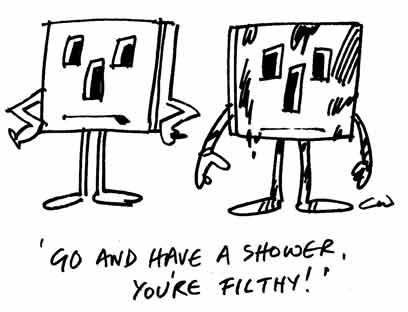|
|
Electricity, 'dirty' electricity and low energy light bulbs - 2009 |
|
Michelle Berriedale-Johnson tries to tease out why all three may be having a detrimental effect on our health. |
|
Electric fields and electromagnetic fields, not to mention their frequencies, are concepts which are liable to confuse the average, non-scientific lay person, let alone those whose brains have been fogged by allergy – or electrosmog! So for the benefit of smogged readers... ‘Dirty’ electricity You can buy filters in the UK from Ark8 here. First Published in 2009 |













